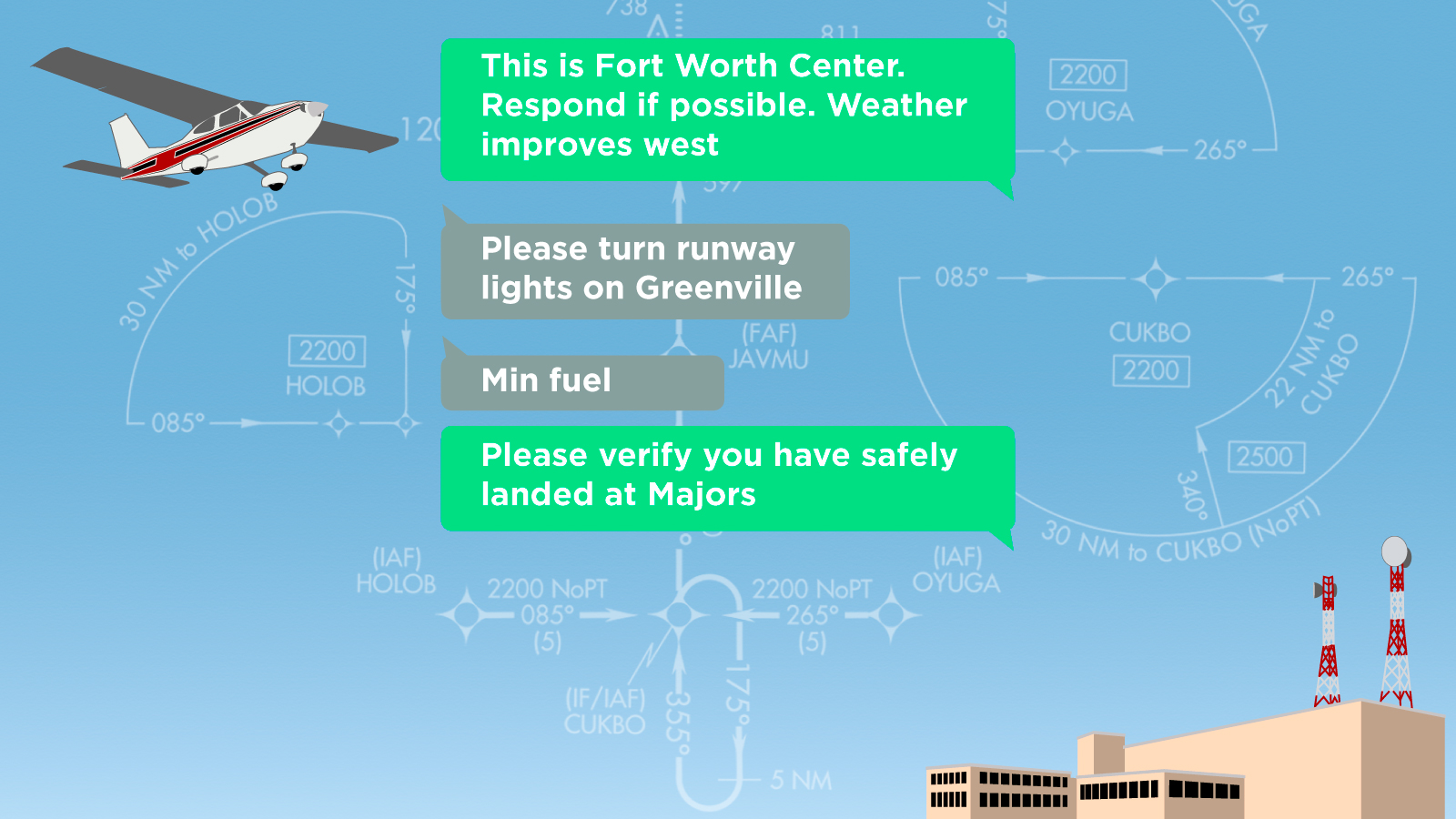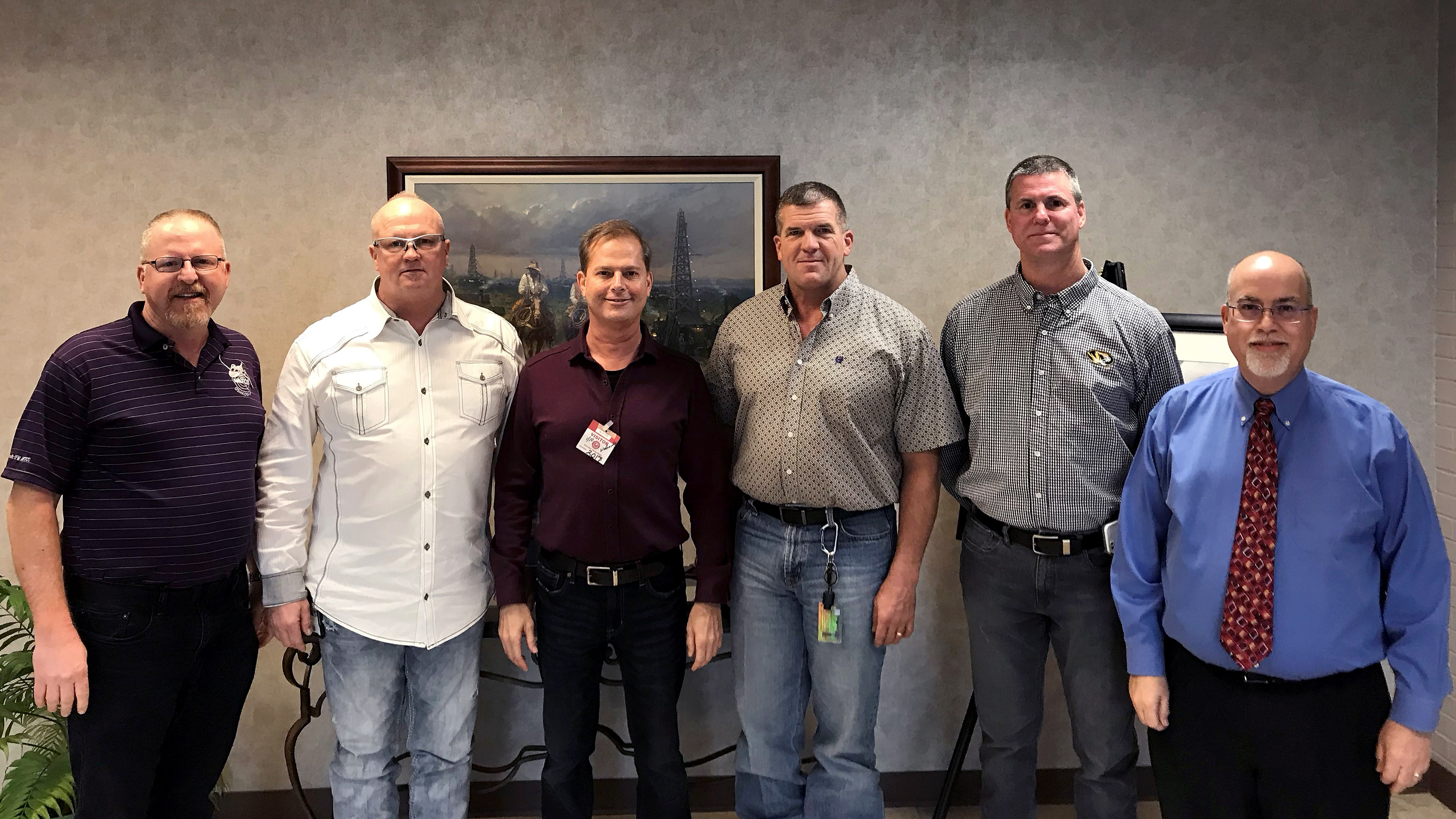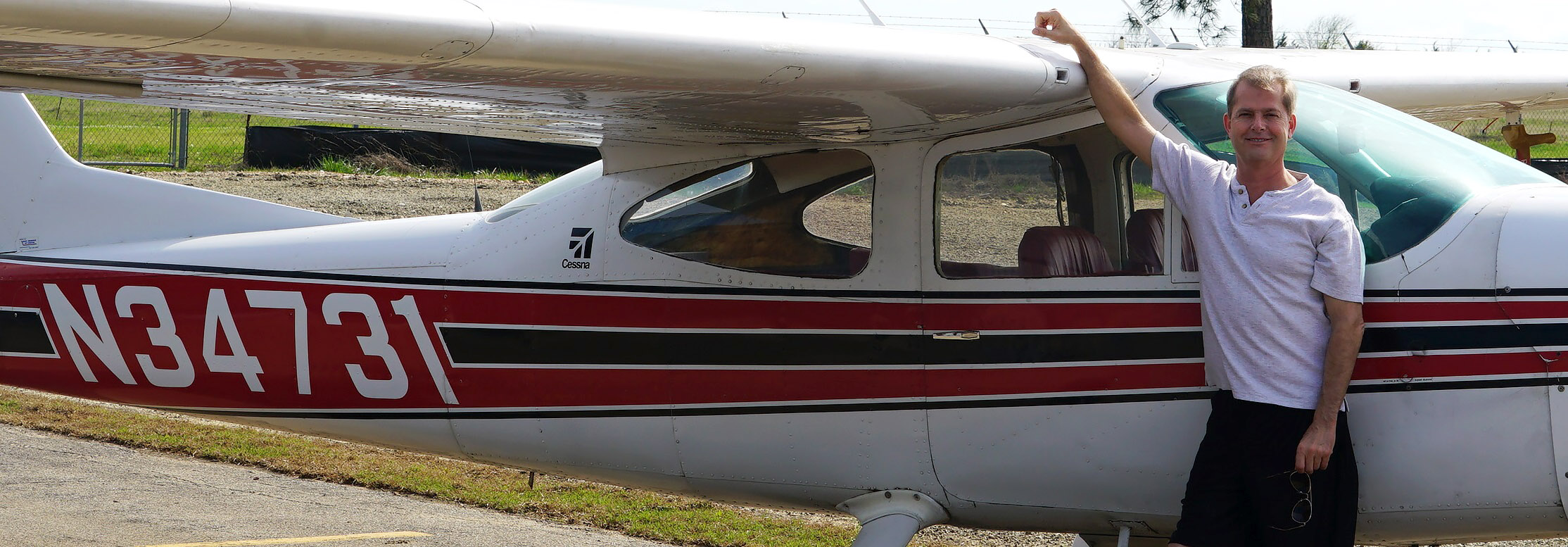In the blind
The last transmission Dr. Peter Edenhoffer recalls hearing as he descended through clouds approaching his home airport in Paris, Texas, on Super Bowl Sunday in 2017 was a snippet of chatter about the game heading into overtime. Then the lights went out.

Cleared for approach to the nontowered airport and descending to the initial approach fix, he expected, based on long experience, to lose radio contact with Fort Worth Center at around 2,500 feet. What he did not expect, however, was that the electrical system would fail, suddenly and utterly, just as he reached HOLOB, the initial approach fix.
“I figured I had enough altitude,” Edenhoffer said. “If I hit the next fix, I figured I’d have enough time to reset the approach… sure enough, the power went out again.”
Edenhoffer abandoned the approach, and began to climb, as well as a Cessna Cardinal can climb with flaps deployed (they are electric). “Trying to climb a 177 with full flaps is not a good thing.”
Finally, the Cardinal broke into clear air, and he cycled the switches again. The power came back on. He retracted the flaps and tried to contact Fort Worth Center.
“My biggest worry,” Edenhoffer recalled of that moment, “everyone’s worried about the Super Bowl… are they looking for me? Does anybody know I’m out here in distress? Does anyone know or care? That’s really what I was wondering.”
His fingers found the familiar knobs of the transponder, and he twisted the dials, carefully dividing his attention between the attitude indicator (the vacuum system was still functioning, and he knew to ignore the electrically powered backup) and dialing in 7-7-0-0. He keyed the mic to call the controllers, and the electrical system went down for good.
Edenhoffer was left with a compass, attitude indicator, altimeter, airspeed, and the knowledge that ceilings were down to hundreds of feet for miles around thanks to a passing front. What he did not know with certainty was how much fuel remained, exactly, after hours in the air from San Antonio.The fuel gauges, never renowned for precision, were inoperative without electric power.
“I tried to cut the speed back to get maximum range,” Edenhoffer said. “That actually, in retrospect, could have been the saving grace. I was going slow enough. That’s why I pulled out the phone.”
There was a long pause on the phone line as the neurologist and instrument-rated commercial pilot with thousands of hours logged, with three children to go home to, recalled that moment.
“Oh, jeez. You know, this PTSD stuff is real,” Edenhoffer said. “I basically pulled out the phone to say goodbye.”
The cellular lifeline
Edenhoffer felt as alone as a human being can feel in those moments over a cloud-shrouded eternity, but as alone as he felt, he had a team. At Fort Worth Center, controller Charlie Porter was briefing Phil Enis, his relief, for the shift change and sector handoff, and noticed Edenhoffer's radar beacon code reappear, the Cessna now climbing. A missed approach was not really a surprise, with Paris reporting 200-foot overcast and three-quarter-mile visibility. Enis, now responsible for the sector, attempted to contact the pilot with no response. He saw the beacon code flash 7700 briefly, then disappear, and immediately notified supervisor Bryan Beck.

This part of the story was published in an online account by the FAA and the National Air Traffic Controllers Association. Controller Russell Smith, at the station next to Enis, began trying to reach the stricken Cessna on Guard. Enis watched the emergency code 7700 disappear for good. Operations Manager Michael Turner began processing an ALNOT, an alert notice requesting a communication search for a missing aircraft, including the pilot’s contact information. Porter, though his shift was over, was not going anywhere.
Over the next 40 minutes, Porter broadcast dozens of times in the blind, advising the Cessna of its position relative to nearby airports that had VFR weather. He worked with fellow controller Hugh Hunton, a private pilot, to figure out what options they could recommend. Airports south of Dallas seemed favorable choices.
The ALNOT was slow to return the pilot’s information and phone number, so Porter asked Beck to look up the tail number in the FAA registry. That only led to a mailing address, so they tried Google. They discovered that Edenhoffer is a neurologist based in Paris, and called his office. Voicemail. They went back to Google, found a local hospital, called the switchboard, explained the situation, and persuaded the operator to divulge the doctor’s cell phone number.
Porter called that number several times, but Edenhoffer never heard it ring. He also had a few other things on his mind.
Up at 5,000 feet the Cardinal was clear of clouds, but the weather in and near Paris was deteriorating. Conditions were improving to the west, but Edenhoffer had no way of knowing that. But the act of sending a text to say farewell to those he loved most led to a break in the streak of foul luck. While cell phones don’t usually work from a mile in the air, the signals confused by so many towers in reach at once, Edenhoffer was surprised that he could, indeed, send a text, and get a response.
“Which is when I thought I would see if the phone GPS would work,” Edenhoffer said. “There was GPS signal, but I just did not know how accurate it was without verification of how many satellites it was picking up. It was certainly better than just having a single point of reference from the compass.”
He did not have an aviation app, but “Google Maps, of all things,” Edenhoffer said. That most basic of modern navigation tools, despite the uncertainty about position accuracy, offered a glimmer of light in the darkness.
As he began to think anew about what to do, how he might use this terrestrial navigation tool to save his life, Edenhoffer received another text: “This is Fort Worth Center. Respond if possible. Weather improves west,” followed by, “McKinney TX airport TKI is VFR. Rockwell TX VFR also. Conditions at GVT deteriorating.”
Suddenly, Edenhoffer knew he was not alone, that he would not die on some empty patch of ground or plunge into a lake and go undiscovered for who knows how long. “People knew I was alive.”
Fort Worth Center
Those people had 175 years of air traffic control experience among them, and Fort Worth Center was now laser-focused on finding ways to help the Cessna find a safe spot to land.
“We couldn’t talk to the pilot and we couldn’t see him anymore,” recalled Beck in the 2017 account published by NATCA and the FAA. “Unfortunately, in our business, that usually means you’ve lost the guy.”
While Edenhoffer's transponder was no longer working, they spotted a faint primary radar return with no beacon code attached, headed southwest.
Porter had by now split off the radar sector and focused his attention on trying to follow that faint target, and trying to contact the pilot. Phone calls were not going through, but Enis, who had stepped out to retrieve his cell phone, sent the text messages at Beck’s suggestion. Endenhoffer’s text message reply prompted a “pumping fists-type reaction” among the crew at Fort Worth Center, but there was still work to be done.
Aloft at 5,000 feet, Edenhoffer had decided to follow the roads, reasoning that if his fuel ran out, which he expected at any moment, he would have one last shot at a safe landing on the road. The road led to Commerce, Texas, where he had made a half-circle, but found no break in the clouds, and saw no sign of the lights at Commerce Municipal Airport. Without a working radio, he had no way to turn them on, so he continued to follow the roads southwest.
By now, the unknown fuel state was pressing on his mind. The next option coming up was Majors Airport in Greenville, Texas. Majors had 8,030 beautiful feet of runway.
“I figured they’d have some bright, bright lights,” Edenhoffer recalled. “At least it was a long, old, big old strip that you could land a 747 on.”
“Please turn runway lights on Greenville,” Edenhoffer texted. “Min fuel.”
The controllers at Fort Worth Center contacted Dallas for assistance reaching Greenville’s operations staff, and to arrange for Greenville Fire-Rescue to stand by for an inbound emergency.
Edenhoffer soon spotted the faint red flashes from those fire trucks through the clouds.
“I found some more hope there because I could actually see that shimmer through the clouds,” he recalled. “ATC has called the airport.”
Now, he just had to find a gap in those clouds. He spotted one, and began to descend.
“Guess what? The hole goes away,” Edenhoffer said. He climbed back into the clear, and realized that this airport might be his last, best hope. He was sure by now that there was little fuel remaining, that his engine would quit at any moment.
“I’ve got to land,” Edenhoffer recalled thinking. “Basically, I just dove. I dove through the clouds. I probably hit 2,000 feet per minute. In a Cardinal, that’s probably not something you should do.”
Edenhoffer got lucky, at last, and broke through into clear air, with 10 miles visibility in every direction. Now, he had one last problem to solve: His airspeed was at or near redline, and he had no flaps available. He bled airspeed with a cautious, shallow climb, not wanting to risk a return to instrument conditions, then set up for a final approach, fire engines and airport lights guiding him home.
“Amazingly, it was a perfectly smooth landing,” Edenhoffer said. “It was just perfect.”
He rolled to a stop, shut down the engine, and just sat there. Adrenaline that had coursed through his body for nearly an hour of unrelenting stress and dim prospects of survival began to diffuse, and he sat in silence. After what seemed like a long time, there was a tap on the window, a firefighter inquiring if he was OK. He would eventually text his son to drive the roughly 50 miles from Paris and pick him up. He would take the following day off from work, still shaken, still recovering.
But first, there was a text to send to Fort Worth Center: "Landed safely... By the grace of God."
That prompted a celebration significantly more exuberant than before.
“If we could have thrown hats in the air we would have,” said Beck in the 2017 NATCA account. “We were overjoyed. We all came together as one to be a part of something bigger than ourselves. It gave us all tingles.”
Edenhoffer would later learn that a combination of incorrect wiring behind the panel, and a short circuit in his landing light that drew significant amperage but did not, mysteriously, burn out the light, were the main culprits that crippled his electrical system. He also found, when returning to retrieve his Cardinal days later, that he had landed with between 20 and 25 gallons of fuel still on board.
Edenhoffer had his Cardinal repaired, and still flies it today. He said that the experience reinforced, in a particularly powerful way, the importance of training for emergencies, of maintaining calm and focus, of never giving up. He recalled hearing the voice of his instrument flight instructor in his head, admonishing him to ignore the electric attitude indicator or risk spiraling out of control and into the ground.
“It’s important to have the basics in your brain … drill it really hard,” he said. Edenhoffer has also made some additions to the panel.
“I have three attitude indicators, now,” Edenhoffer said, “and a battery backup. If you’re going to fly IFR, you really, really have to be prepared for the worst, and take it seriously.”
In January, nearly a year after that night of danger that took him to the edge of the abyss, Edenhoffer wrote to Beck, Porter, Enis, Thomas Herd, Hunton, Mike Clifton, and Turner, his ground team, the air traffic controllers who improvised on the fly and became the team behind the texts in the dark that helped guide the pilot safely back to the ground.
“There are no sufficient words,” he wrote. “After all, how can simple words of thanks ever express the depths of saving a life? There are, however, only words of appreciation that can be offered. Had your team not been willing to think outside the box, to use personal ingenuity even against the conventional rules in place, I might not be sitting here to write today… thankfully, such was not the case that night.”
Each year, the National Air Traffic Controllers Association recognizes air traffic controllers whose actions in crisis have saved lives. This year, the Communicating for Safety conference and the Archie League Medal of Safety Award presentations have been moved to October (these presentations have in recent years been made in the spring). NATCA spokesman Doug Church said in an email that nominations remain open until April 30, and selections will be likely be made in June. More information is available on the NATCA website.




